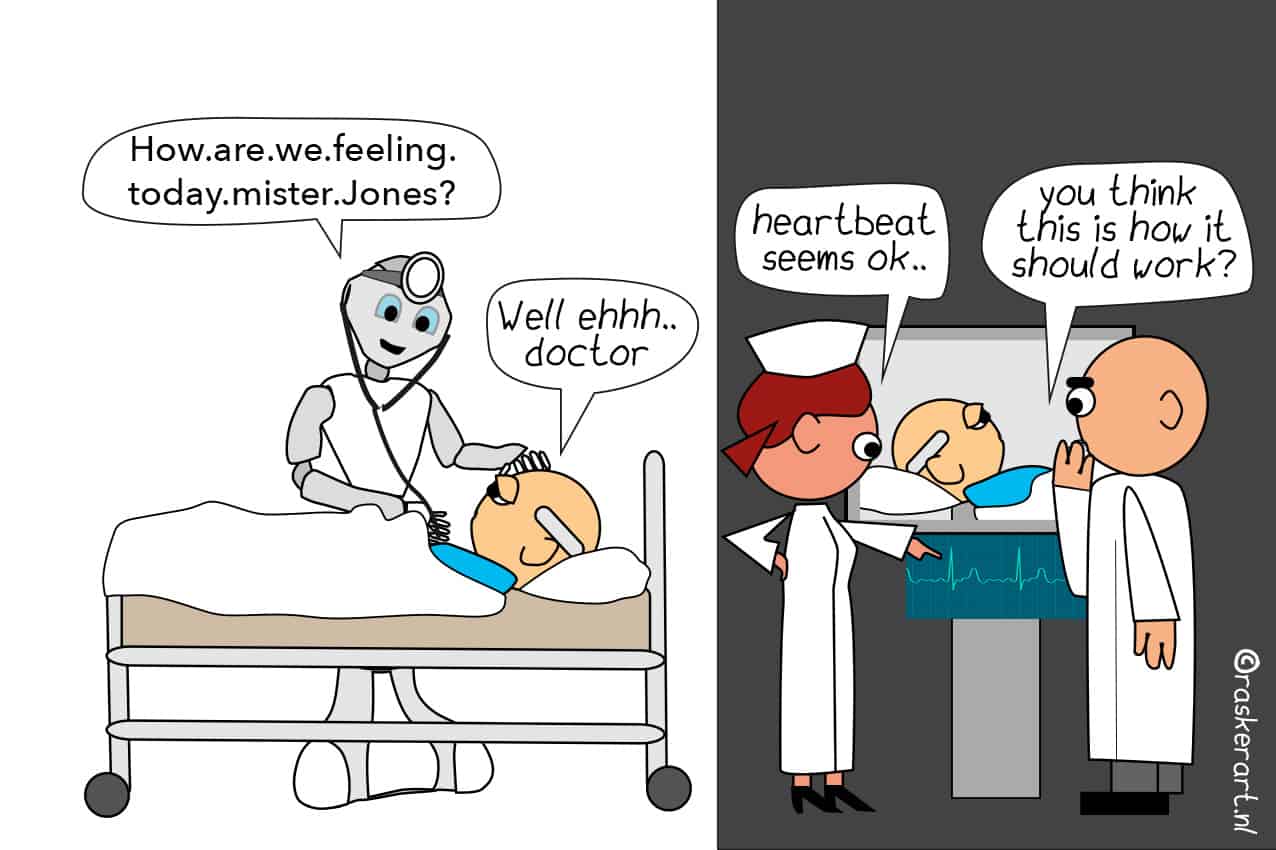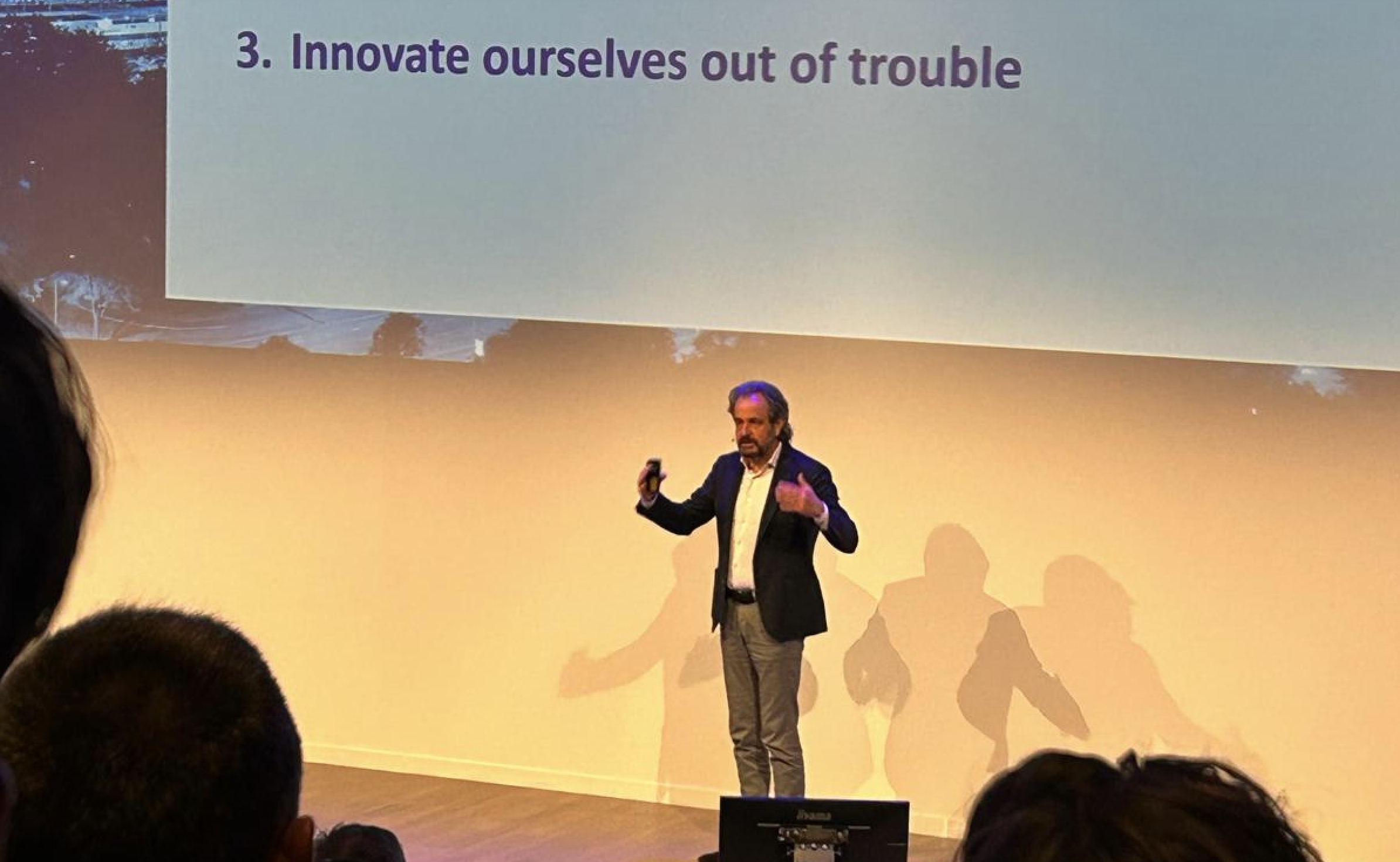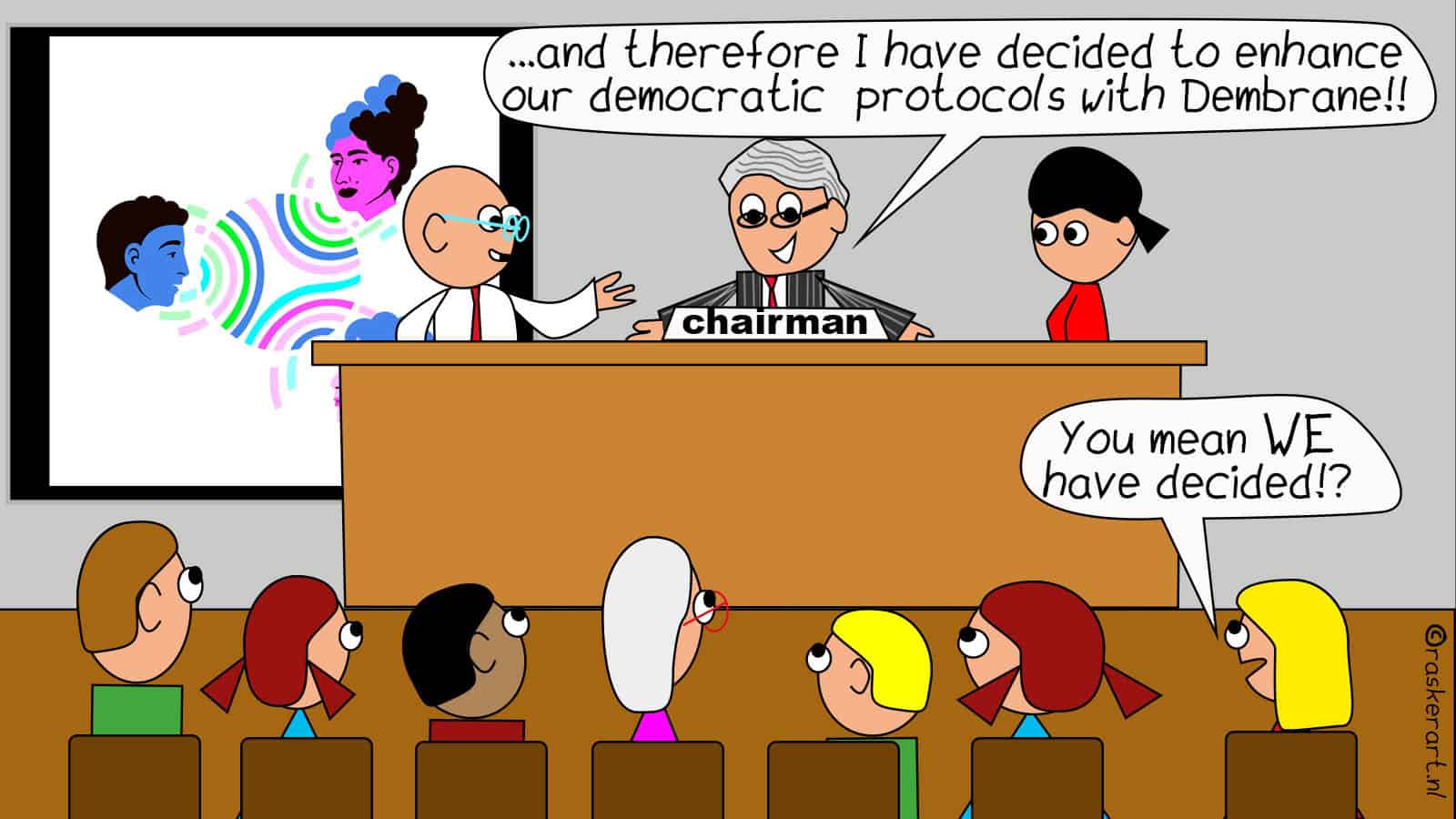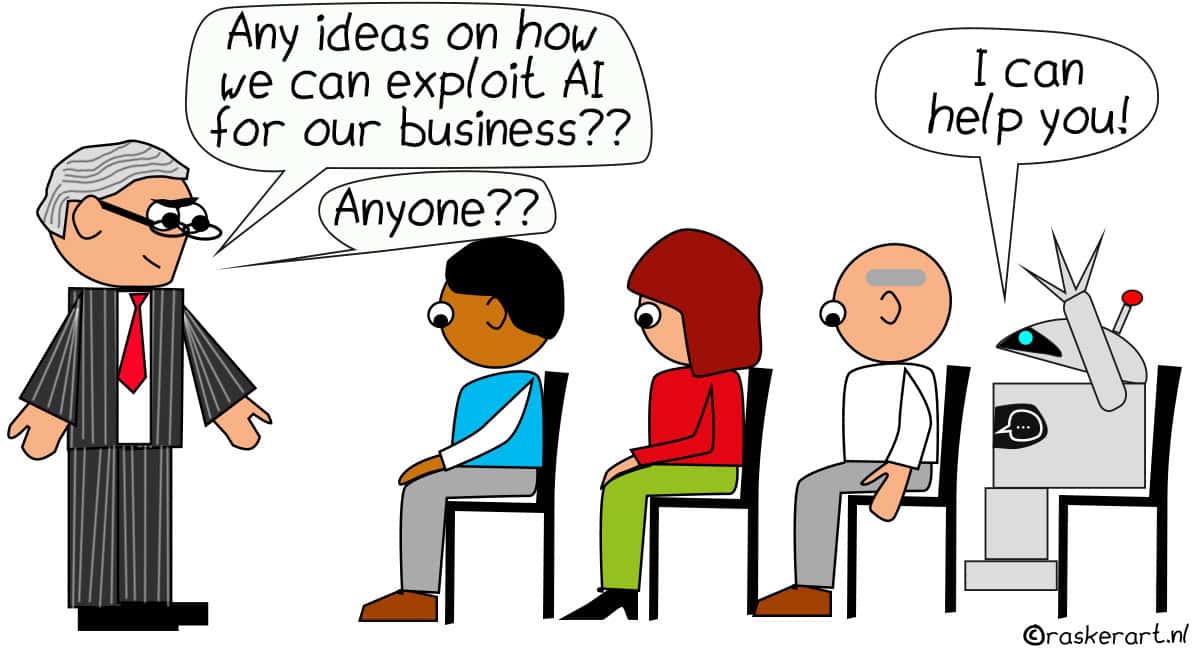
In our Sunday newsletter, we, as editors, reflect on the past seven days. We do this on the initiative of our cartoonist Albert Jan Rasker. He chooses a subject, draws a picture, and we take it from there.
One of the most common arguments regarding robots, AI, and machine learning in healthcare (or, in fact, in any human-centered sector) is the lack of personal attention.
Arthur Bouwman, a recent professor of Perioperative monitoring and clinical decision support at the Eindhoven University of Technology, makes it his professional mission to implement technology in healthcare.
We will have to: projections are that by 2040, one in four workers will have to work in healthcare. “That’s not sustainable,” Bouwman emphasized in an interview with colleague Mauro Mereu.
But, that implementation of technology succeeds only if patients are also on board, the brand-new professor told me. “At the end of the day, their needs remain the priority. A good user experience makes all the difference in adopting a technology. As physicians, we only perceive what a patient would want.”
A scientific study of the experience of patients admitted to the ICU in Catalan hospitals during COVID-19 showed the same. In all patients, AI and robots were part of the treatment. One man (72) said:
“All the staff were bustling. A robot can help. If a robot can take over tasks, the doctor can spend more time with the patient, and care becomes more personalized.”
So, a reality in which a robot provides personal attention, as Albert Jan outlines in his cartoon this week, seems unthinkable (for now). But the combination of AI and robots as help so that healthcare personnel have more time for their patients will hopefully become more and more every day. This is also how we use our AI collegaue Laio: as an aid so that we have more time to do interviews and write longer articles for you.
If robots can also work well together, that’s a bonus. For the first time, researchers at the University of Twente managed to get two micro-robots to pick up, move, and assemble objects in 3D environments together.
Here’s what else struck us this week:
- TNO builds laser pointer for space mission targeting black holes
- European tech industry warns: ‘Another decade, and we’re done for’
- How a small ‘gap’ brings green energy storage through electrolysis closer
- Dutch industrial landscape is lagging behind, here’s why
- From waste to wonder: startup turns olive leftovers into valuable ingredients
- Reshaping the maritime industry with AI
- Renewable revolution eclipses Russian gas dependency: Key Insights from EU report
And here you’ll find the rest of the articles we wrote last week. Have a great, innovative week.
Aafke Eppinga
editor-in-chief Innovation Origins
P.S.: we are working hard on the second edition of our magazine IO NEXT, which will go live on Wednesday. It’s all about our brain. Don’t forget to subscribe. Our first free first copy is already available!








